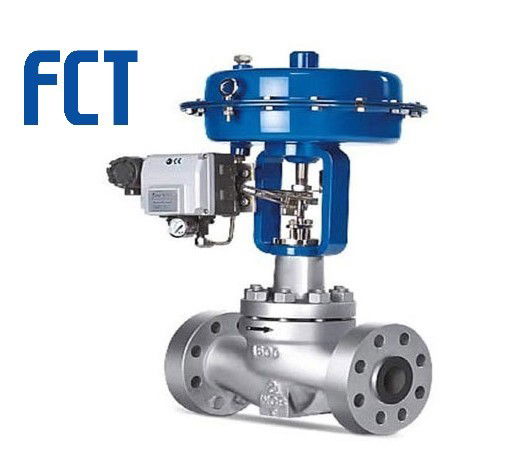Discovering the Functionality of Modern Control Valves in Industrial Applications
Discovering the Functionality of Modern Control Valves in Industrial Applications
Blog Article

Maximize Energy Financial Savings and Comfort With Advanced Building Automation Controls
In the world of contemporary style and center management, the integration of advanced building automation manages stands as a pivotal innovation. The merging of technology and sustainability has actually birthed a brand-new era where energy effectiveness, convenience optimization, and operational streamlining are no more remote desires but attainable facts. By utilizing the power of automation, buildings can adapt, react, and develop in methods that were once unimaginable. The capacity for considerable power cost savings and improved convenience is not simply a pledge yet a possibility waiting to be met. This paradigm shift in structure monitoring holds the vital to unlocking a world where ecological conscientiousness and occupant health harmoniously exist together within the walls of our structures.
Energy Effectiveness Advantages
Energy efficiency advantages can significantly minimize energy usage and operational expenses in structures. Energy-efficient systems, such as advanced structure automation controls, can maximize the use of resources like home heating, cooling, and lighting, leading to lower energy costs over time.
In addition, boosted power effectiveness can extend the lifespan of structure devices and systems. By operating much more successfully, HVAC systems, lighting fixture, and various other structure components experience much less deterioration, causing reduced upkeep and substitute costs. In addition, energy-efficient structures typically regulate greater residential or commercial property values and rental rates, offering lasting financial advantages to proprietors.
In addition, power effectiveness can improve resident comfort and performance. Properly regulated indoor atmospheres with optimum lights and thermal problems develop a more enjoyable and favorable workspace, resulting in improved worker satisfaction and performance. Generally, the power efficiency benefits connected with innovative structure automation controls are multifaceted, incorporating expense financial savings, ecological stewardship, and occupant well-being.
Enhanced Comfort Control
Enhancing convenience control in building environments calls for a sophisticated integration of advanced automation systems for ideal passenger health. By utilizing innovative building automation controls, centers can tailor the indoor setting to meet the specific demands and choices of passengers. control valves.
By incorporating these advanced controls, buildings can not only boost convenience however additionally enhance energy performance by optimizing system procedures based on real tenancy and usage patterns. Inevitably, focusing on passenger convenience through innovative automation systems leads to an extra satisfying and much healthier indoor setting.
Operational Efficiency Improvements

In addition, the execution of real-time surveillance and analytics devices enables building drivers to recognize power inadequacies and operational abnormalities without delay. By constantly see this here checking power usage patterns and system efficiency metrics, modifications can be made in real-time to maximize energy intake and ensure peak operational efficiency. control valves. In addition, integrating need feedback approaches into structure automation controls can even more improve functional performance by dynamically readjusting energy use based on grid problems and prices signals
Indoor Climate Optimization
Effective interior climate optimization is a basic element of structure automation controls, ensuring owners' comfort and health while optimizing power financial savings. By using advanced sensors and controls, constructing automation systems can continuously check and change temperature, moisture levels, air top quality, and air flow to produce an optimal indoor atmosphere. Maintaining consistent and comfortable problems not just improves passenger satisfaction however also increases efficiency and total health.
Indoor environment optimization likewise plays an important role in power effectiveness. By fine-tuning home heating, ventilation, and cooling systems based on real-time data and tenancy patterns, constructing automation controls can substantially decrease power usage - control valves. For example, executing approaches such as demand-controlled ventilation and thermal zoning can assist reduce power waste while making certain that each area of the building obtains the needed conditioning.

Lasting Atmosphere Creation
Building automation controls not just maximize indoor climate conditions for energy efficiency and Get the facts owner comfort yet additionally lay the structure for developing a sustainable atmosphere via tactical management of sources and systems. By incorporating advanced structure automation technologies, such as sensing units, actuators, and smart software program, facilities can readjust and monitor energy use in real-time to minimize waste and reduce their carbon footprint. These systems make it possible for predictive maintenance, determining prospective problems before they rise and enhancing devices efficiency to improve longevity and efficiency.
Additionally, sustainable environment creation expands past energy monitoring to include water conservation, waste reduction, and interior air high quality renovation. Building automation controls can manage water use, identify leakages, and guarantee correct waste disposal practices, contributing to overall sustainability efforts. Additionally, by monitoring and managing air flow and purification systems, these modern technologies enhance occupant wellness and efficiency while lowering energy intake linked with cooling and heating operations.
Conclusion
Finally, advanced structure automation controls deal considerable benefits in terms of power cost savings, comfort control, operational performance, indoor environment optimization, and developing a lasting atmosphere. By carrying out these controls, structures can achieve optimum efficiency while decreasing power intake and improving occupant convenience. It is apparent that the use of innovative automation innovation is essential in boosting building performance and developing a much more lasting future.
Energy performance benefits can considerably decrease energy intake and functional expenses in buildings. In general, the energy performance benefits associated with innovative structure automation controls are multifaceted, incorporating cost savings, ecological stewardship, and resident well-being.
In addition, including site here need feedback methods right into building automation controls can better boost functional performance by dynamically changing power usage based on grid problems and prices signals.
Structure automation controls not just optimize indoor environment problems for power performance and owner convenience however likewise lay the structure for creating a sustainable environment with tactical administration of sources and systems.In verdict, progressed building automation manages offer substantial advantages in terms of power savings, comfort control, operational efficiency, interior environment optimization, and creating a sustainable environment.
Report this page